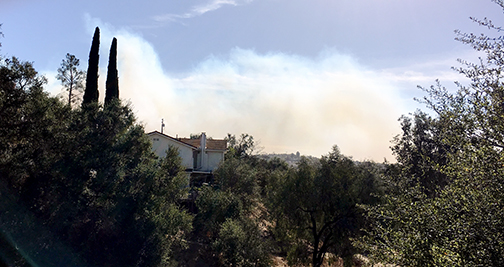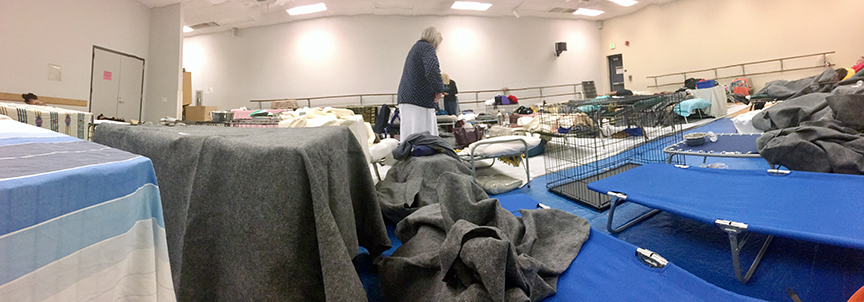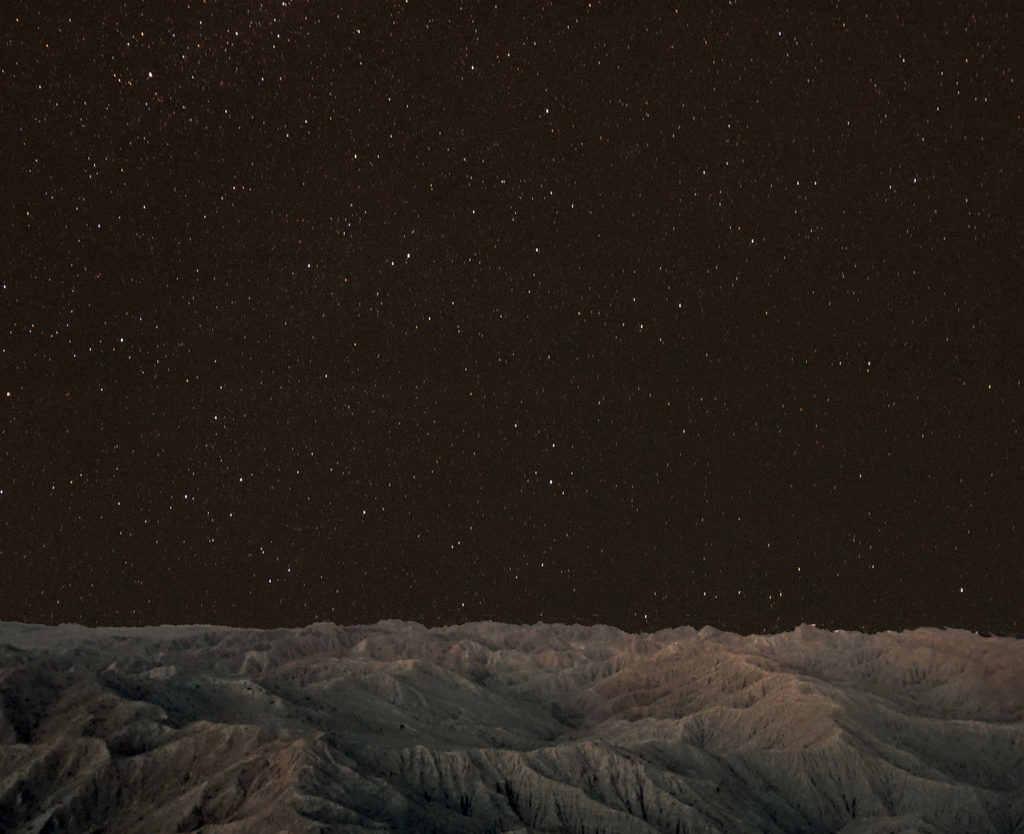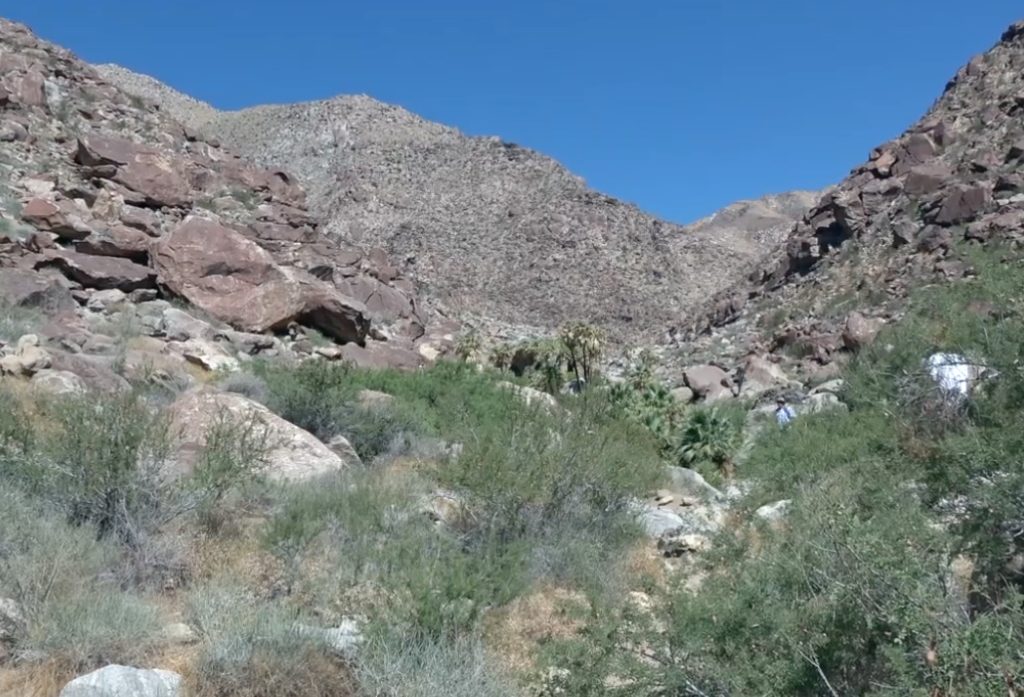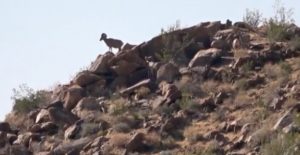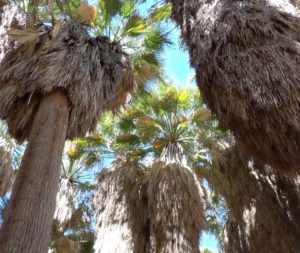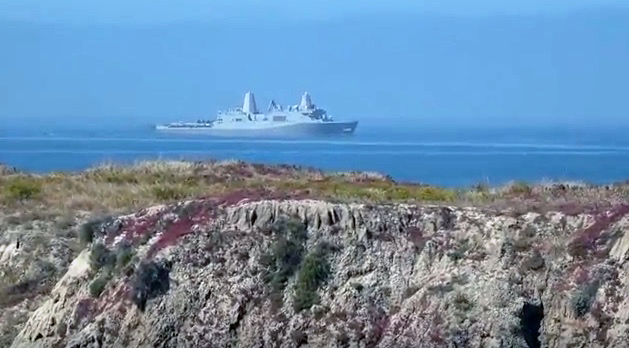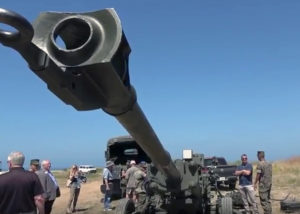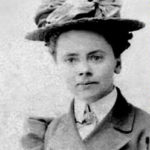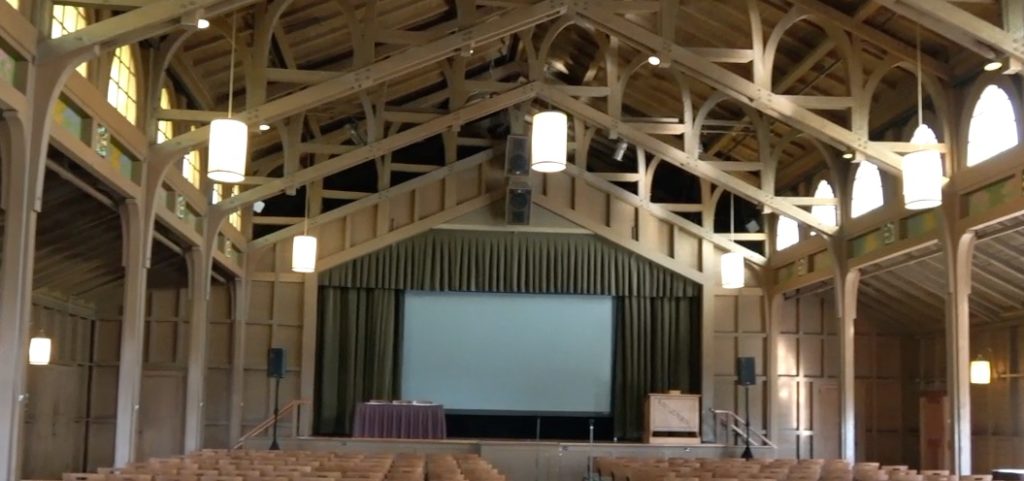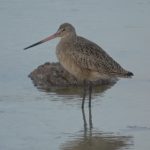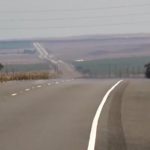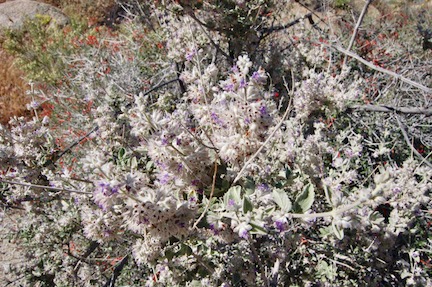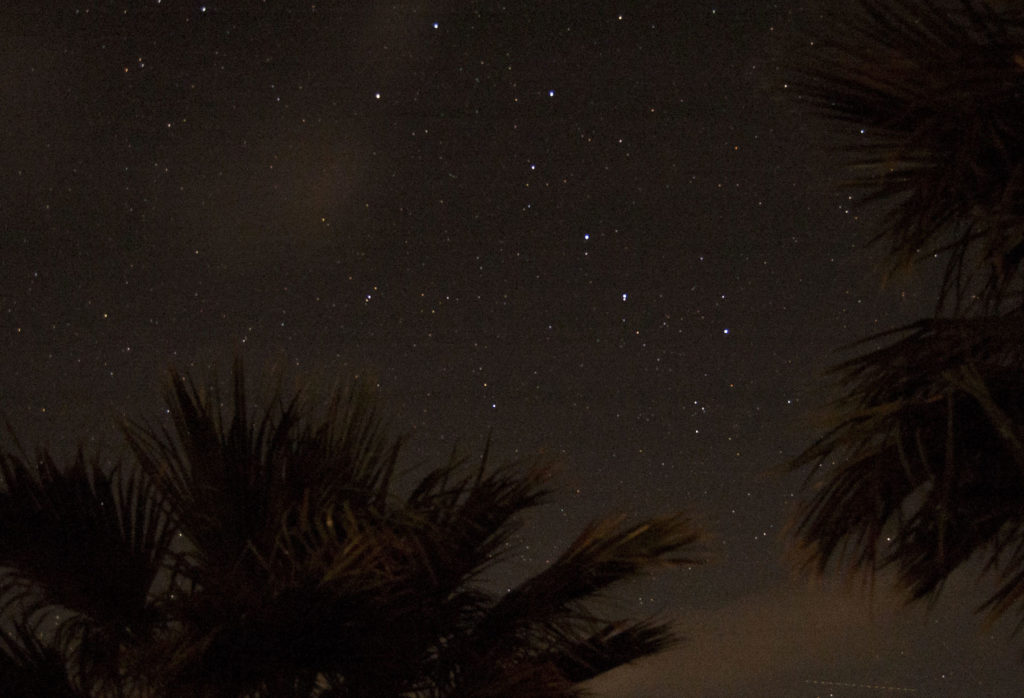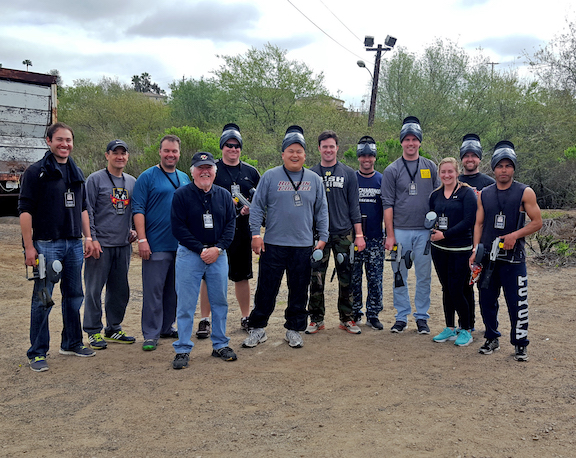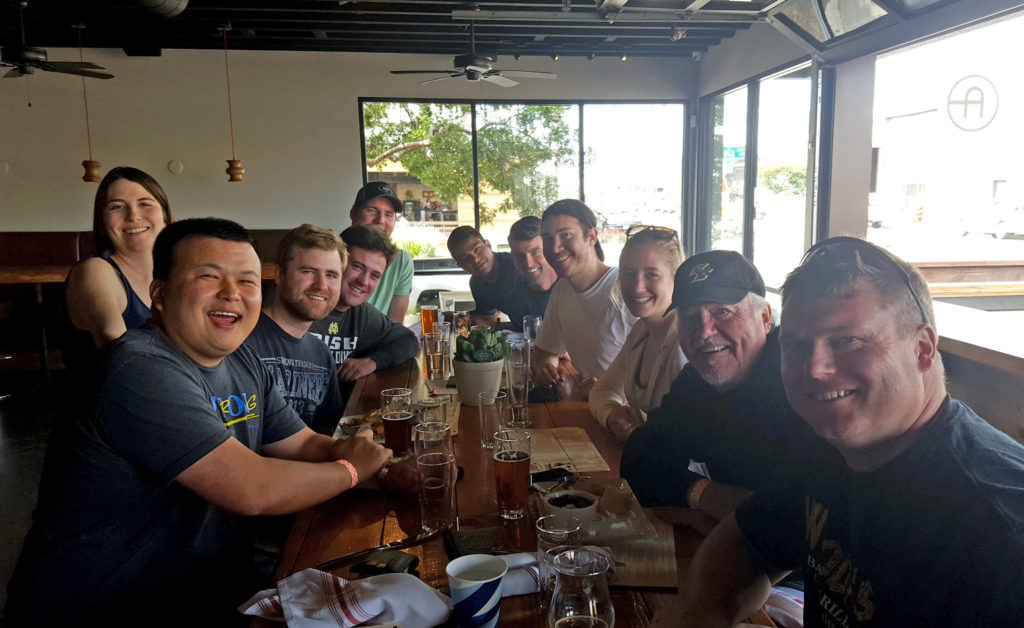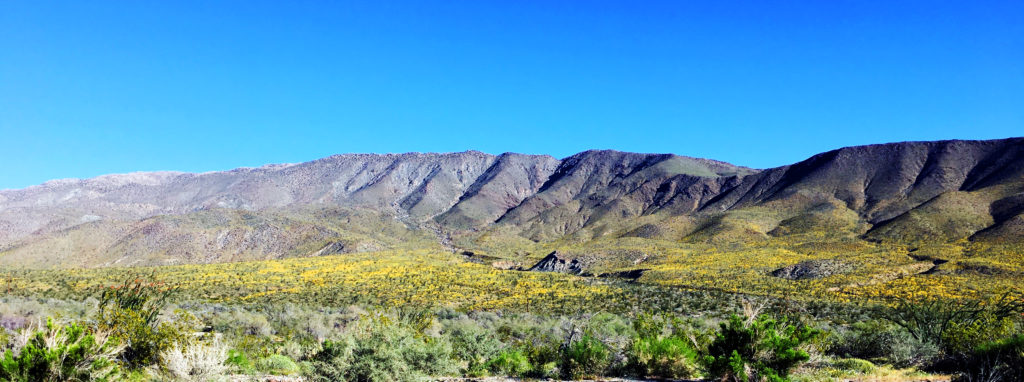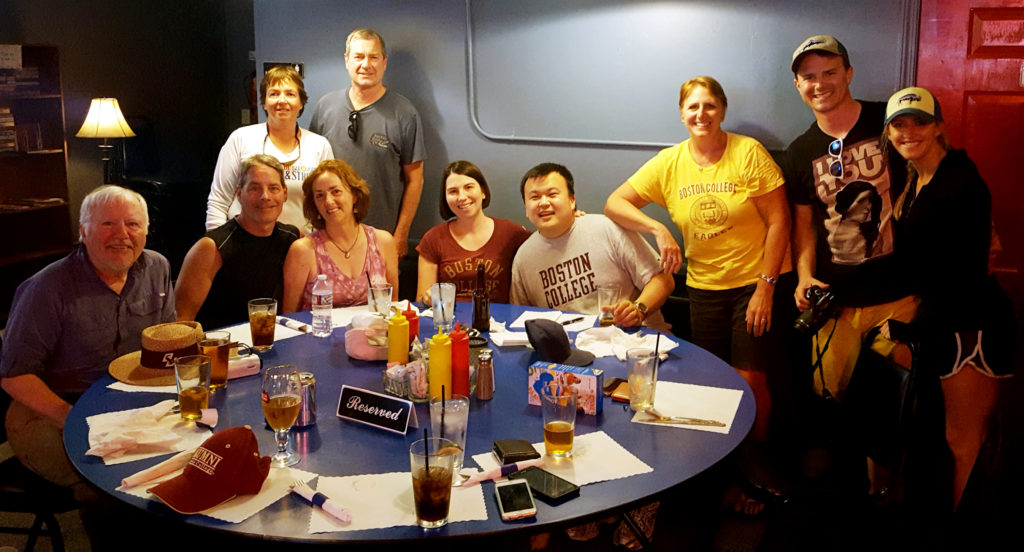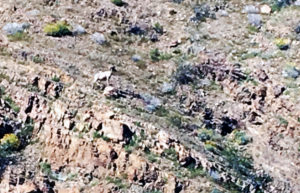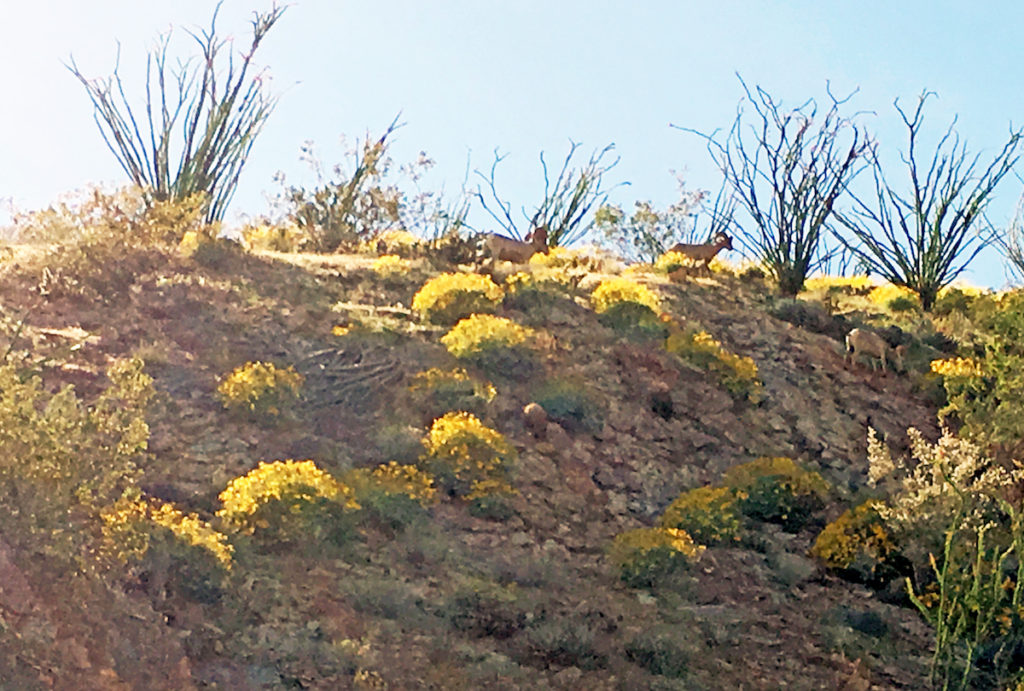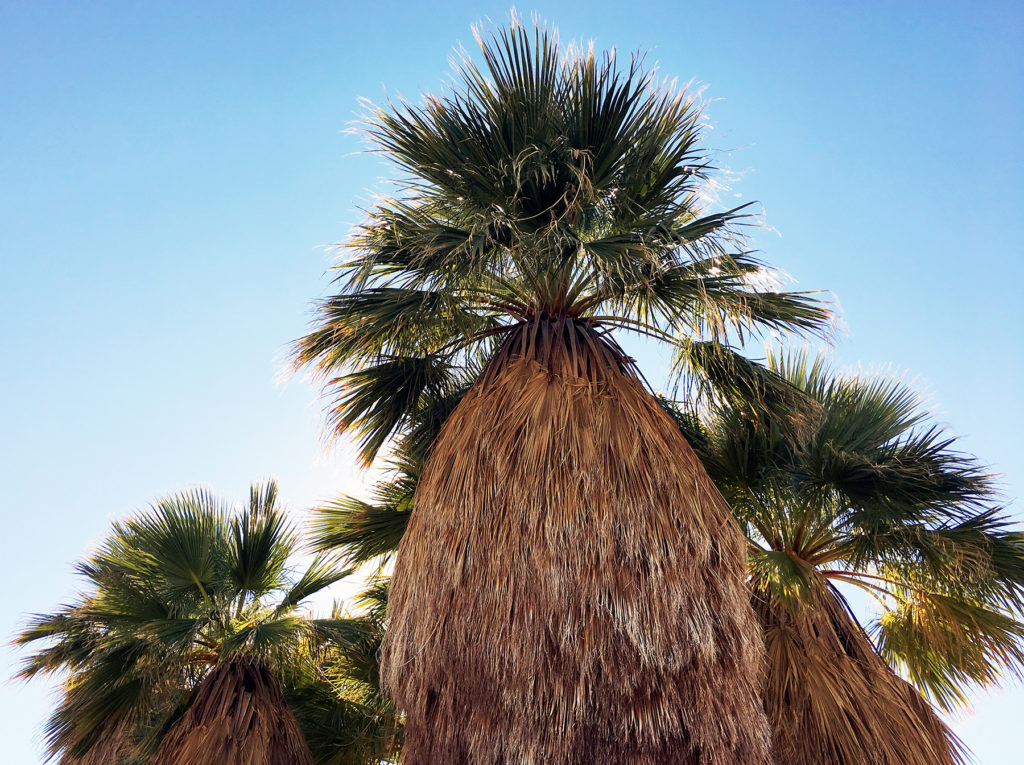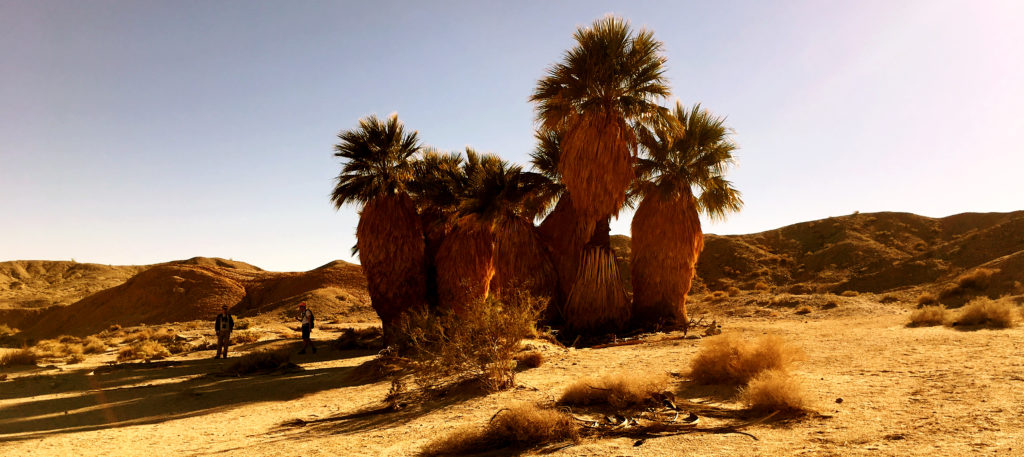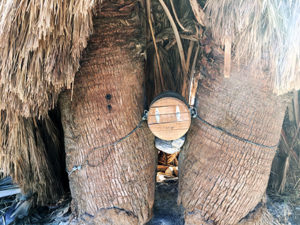UPDATE December 17: The two photos below are from Sunday’s San Diego Union-Tribune.
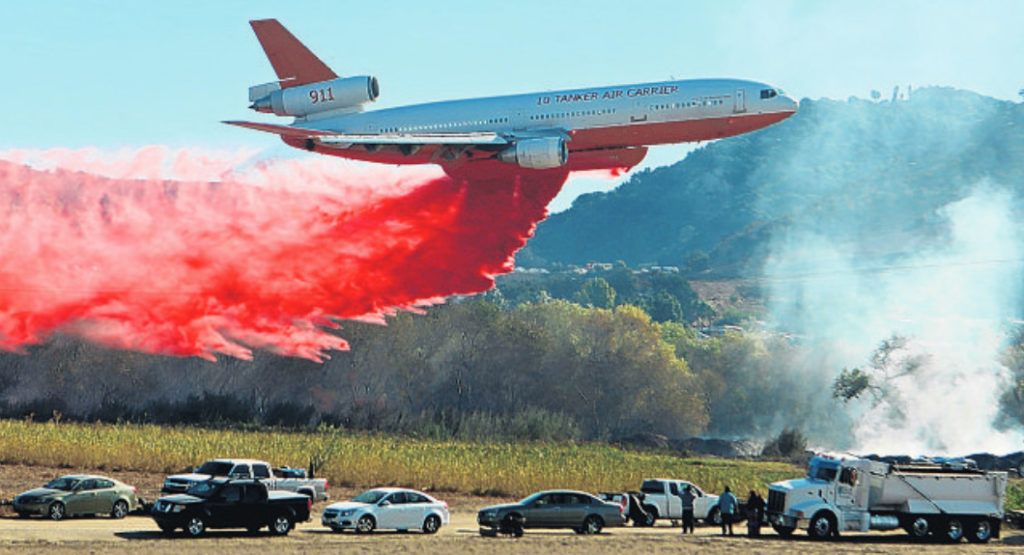

(This brief video, shot by the local newspaper [Village News], shows the small shopping area called River Village at the junction of Mission Road, on which I live, and State Route [SR] 76, about 2.5 miles south of my house. You can also hear the wind. This is where I get my pizza, my haircuts, and, sometimes, a burger from Jack-in-the-Box.)
(UPDATE December 11: I drove down to River Village this morning and it is open and active. Fire damage did not seem severe in the area, scorched trees and areas of ground, but no burned houses and much green about.)
Mid-afternoon Thursday, I received a phone call from the sheriff. It was an automated call, informing me that an evacuation order had been issued “for my area.” Earlier, I had received a similar call advising me of an evacuation warning. I had packed my car with various things two days before, because of the red flag alert and now, on this warm Thursday afternoon, I loaded up more stuff. (The line between preparedness and paranoia is a thin one.)
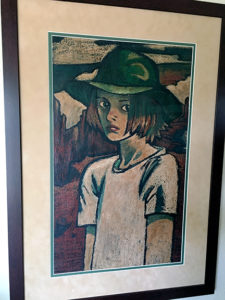
I added the only significant piece of original art I own, a self-portrait Julia did in high school for which she won a gold medal in the Boston Globe Scholastic Arts competition. Framed, it was somewhat big — 39 X 28.
(It’s an interesting exercise, determining what you want to save, and it’s also based on how much time you have to decide. What would you keep if you had a day’s notice, two hours notice, five minutes notice?)
I also had to include my companions, of course, the dog and cat, and, so doing, we headed off to Fallbrook High, only a mile or so north, to the shelter there. (Several local friends had offered to put me up, but the dog and cat complicate things and I wanted to avoid that.)
(The weather for the past few days had been more than “unusual,” it was kinda weird. It wasn’t hot. The temperature Thursday afternoon was mid-70s. It was so dry. Relative humidity was five percent, and the dew point was -1 degree. I had seen and experienced five percent humidity, but I had never seen such a low dew point, which is considered an accurate depiction of the amount of moisture in the air. Defined as “the temperature to which air must be cooled to reach saturation,” that meant the local temp would have to go below zero. Wasn’t going to happen.)
Even earlier on Thursday, near midday, I had noticed what appeared to be smoke on the horizon to the north. I figured it was from the LA fires. Dillon texted me, asking if I saw the smoke. I said I thought it was LA. He said, no, it’s Bonsall, a community just south of me. I turned around, to look south, and saw this.
Oooookay. This was a fire a few miles southeast of me, about to move along the San Luis Rey River valley, pushed fast to the southwest by Santa Ana winds. (This is called the “Lilac Fire.” For those who wonder how California names fires, they choose the place name closest to the fire’s origin. In this case, it started on Lilac Road in Bonsall.)
As I sat in the Fallbrook High parking lot later, watching fire and sheriff’s personnel gearing up, I expected to receive a notice soon that the evacuation order had been lifted. After maybe an hour, I noticed the trees. They were moving because of the wind, as my trees had been, but now they were being moved by a wind from the south, not the northeast as before. I recalculated, realizing that might bring the fire toward my home instead of away.
Fallbrook High could not accommodate pets, so I headed off to the Red Cross shelter in Escondido, about 30 miles south. I joined a long line of traffic leaving Fallbrook, on two-lane roads, so it took quite a while to reach the freeway, the 15. Finally on the freeway, at dusk, I drove south, passing the fire and seeing ranch houses (real ranch houses, not the “style”) ablaze. I was very worried, and in retrospect rightfully so, about the large number of horses in the area, especially at the San Luis Rey Downs training track.
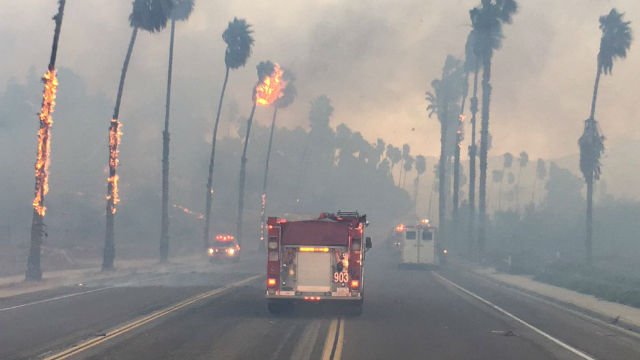
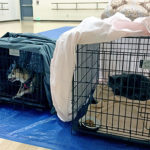
Arriving at the shelter, which was the East Valley Community Center, we were among the first arrivals. Most people who lived around me had likely gone to Fallbrook High. A Red Cross volunteer told me the rules were that people with animals would be in a separate area together with the animals. I was shown to the dance studio, where Humane Society employees and volunteers were setting up crates, etc. Baxter and Boo were the first non-human “residents.” The Humane Society was great. They provided crates, covers for the crates, litter boxes for cats, food for both (I had brought some). They identified who was in what crate and any special needs, etc.
Early on, a young woman approached me and asked how I was doing. She was a volunteer mental health worker. We chatted and I told her from where I had evacuated. A little while later, she came and showed me a notice on her phone that the fire had jumped SR 76 at the intersection of Mission Road. My fear had been proven correct. The now southerly winds had pushed the fire north. Below is a photo from the local paper of that junction during the fire. Anytime I head south, I go down Mission Road and take the 76 either east or west. That intersection is a very common scene to me, but never like this.
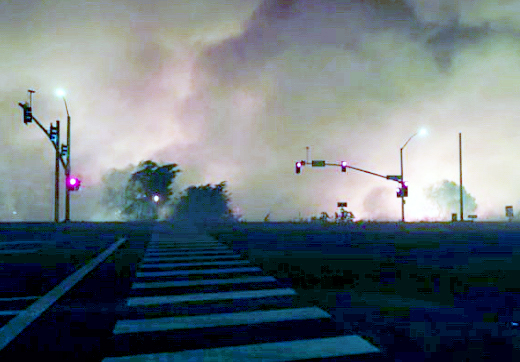
At “dinner,” donations from local establishments (I enjoyed a Jersey Mike’s sub), I heard the same mental health worker say her activity at the shelter was as a volunteer and that she worked at Camp Pendleton. I asked, “At the hospital?” No, she said, she was embedded with a Marine unit, providing assistance for PTSD. One of the angels. I thought the shelter may have offered respite for her, too, that night.
Another reason I had chosen to go to the shelter was to learn from it. The need may arise again. There were fires around here in 2014 and big, damaging fires in the area in 2003 and 2007 before I moved here. I wanted to see what kinds of services and support were offered, what I should remember to bring, etc. One thing I realized was that you get a cot, but you should bring a “camp chair” and, while you get a blanket, you don’t necessarily get a pillow. Early in the evening, a well-dressed, middle-aged woman came up to me and chatted, just asking about where I was from, etc. Ended up she was president of the local Red Cross chapter and, several minutes later, she kindly offered me a pillow.
As the evening wore on, more people and pets arrived. At one point, going through the lobby, I saw a bus outside. From Fallbrook High. The shelter there had been evacuated. I began to hear conversations from people who had just arrived. One elderly couple (older than me) said they had had the proverbial five-minute notice from the police to leave. Another woman, who lived in Bonsall, not far from me, said on her phone that she watched embers approach her home, “swirling like tornadoes.” She expected her home, which she described as surrounded by live oaks, to be gone.
More and more dogs . . . and cats . . . arrived. One Red Cross worker told me, “We’ve got a comfort parrot on the way.” “And he’ll talk all night,” I said. “Yes,” she responded, “but in a separate room.”
Later, she reported that two pet tortoises were coming in. I didn’t see them and don’t know if they were “comfort” or not. Several people stated that their pets were “support” or “comfort” and had to stay with “Mommy” or “Daddy” and not in a crate. That led to some interesting encounters among pets during the night.
I tried to sleep, but failed. I overhead a woman say on her phone, “We’re essentially sleeping in a kennel.” Dogs like my Baxter, a chihuahua-terrier mix, are territorial, especially regarding other dogs, and he was not distinctive. Any new arrivals were greeted with much barking, as were any of the uncrated dogs that approached a crate. Cacophony does not quite describe it.
Plus there were those humans. You know, the type that don’t seem to notice they are not alone and speak with each other or on the phone as if they’re at home. Around midnight, a family arrived . . . loudly. It included a couple, their teenage daughter, and 98-year-old grandfather. I know that because they loudly stated the need to situate him comfortably. They also had a couple of dogs and “kitties.” Crates were no longer available, which brought about an angry . . . and loud . . . assertion from the father that such was unacceptable. He had one of those voices, you know, that “pierces.”
Settling in, somewhat, the family then began to squabble. Extensively . . . and loudly.
At times, things quieted down. But never for long. I doubt many minutes went by without a bark or several. Add to that an Olympic-level snorer. I expect the guy had a medical condition, as the “snore” seemed more a painful wheeze. But it went on . . . and on . . . and on, which set off the father previously mentioned, who was across the room from the snorer, and often yelled at the guy to stop. There was probably one person who slept that night and it was the snorer, though I can’t imagine it was comfortable.
It also did not help that the lights were on all night. I thought that might be good, for security reasons. Perhaps it was for the animals’ well-being. I asked one of the Humane Society reps about it. None of those reasons applied, she said. They had tried to shut them off, but were unfamiliar with the controls and only made them brighter when they tried. So they stayed on.
During the hours of just thinking, I thought about my house. I do not have any real emotional connection to it. It is not where my kids grew up, for example. For the most part, it fulfills a function for me. There are many things within it that I would hate to lose if fire destroyed them, but I had put other things I thought most valuable and important to me in the car and had them with me. I realized insurance could well provide me a house I liked better. So I spent some time designing such a house in my head. While losing the house would have caused immense logistical problems, I also felt pretty confident USAA would help in the interim and I might end up with a new home I preferred. Heck of a way to refinance, though.
Morning came, or at least close enough to morning to get off my cot. There were no showers at the shelter, but I was able to brush my teeth in the restroom. Breakfast, once again provided by local businesses, included pastries and coffee from Starbucks. Checking my local paper online, I saw that the fire, after jumping the highway, only went a little north before moving off to the west, across an area called Olive Hill.
Here’s a panoramic shot of the “kennel” from my cot in early morning.
After dawn, I put stuff back in the car and transferred the pets to it. Having signed in at the shelter the night before, I needed now to sign out. One can choose to sign out permanently or temporarily. If temporary, you are assured a spot on return. While I had every intention not to return, I chose temporary when I learned that I could call later to cancel.
Driving back to Fallbrook, I had to go further north, as my usual exit, onto SR 76, was closed. I then came back south, but encountered a roadblock on Mission Road a couple of miles north of my house. I was told that, with proof of residence, I would be permitted to go further, but I was warned there was another roadblock further on, at the road just before the one I needed to use, because of downed power lines. First, I had to get proof of residence. For reasons unknown to me now, I had listed my post office box on my license rather than my street address. I told this to the sheriff’s deputy and he said, “Well, that’s a problem.”
Heading away, I tried to think of a solution. Something like a utility bill would work, but paper with that was at my house. Then I thought of the post office. Mail sent to me at my residential address was put in my post office box, so USPS must have something that says that. Explaining my situation to the postmaster, the first thing she said was, “How’s your house?” And I realized that I didn’t know, which is what I told her. She looked up my record and the only other address on record was my old one in Waltham, which is where I lived when I ordered the PO box. She then decided simply to certify that I lived at my address. She wrote out something saying that, signed it, and put the Post Office stamp all over it. It wasn’t proof of residence, but it was pretty good evidence.
It got me through the roadblock. The first one. At the next one, I was able to take a left and proceed up into the hills above my house, on a backdoor route about four miles long. I live in a very hilly area, so roads are sinuous. I got to my access road and turned into it. I was still not sure what I wanted to see, but I was fundamentally not displeased to see the house safe and sound.
No power. It had been turned off Thursday night, SDGE said, for safety reasons, because of high winds. The date for restoration, according to their outage map, was Monday at 4 pm. I went to Starbucks, this time for lunch, and used its wi-fi to catch up on things. Then I went to the library to continue. Brought home a quarter-pounder meal for “dinner.” Sundown here is around 4:45 this time of year. I had not slept since waking at about 7 on Thursday morning, about 33 hours earlier. At 5, I was asleep and I slept very soundly until 3:30 am. It could, in fact, have been the dog that woke me up. I noticed he was somewhat restless and I realized I had not taken him out for nearly 12 hours. Took him out to do his business in the dead of night and returned to bed for another few hours.
Again, sat around waiting and hoping for power to return. Reading the Boston Globe online, I saw an Associated Press article about the fire datelined “FALLBROOK, Calif.” Hadn’t seen that before in the Globe. Bet next time, too, it will be for some calamity. The article said the fire was near the “small city of Fallbrook, known for its avocado groves and horse ranches.” Gives us a nice bucolic look and it’s pretty true. But the editor in me points out that Fallbrook is not a city. It is not a town, either. It calls itself a “village,” because it has no local government. It is an unincorporated area of San Diego County. Where I live, for example, is near the undefined border between Fallbrook and Bonsall, in an area also sometimes called Winterwarm (which I think is a bit much) and San Luis Rey Heights.
I had planned to watch the Navy-Army game at a VFW or American Legion post Saturday, but didn’t feel comfortable that day leaving Baxter and Boo at the house when there was the potential, still, for evacuation. What if, instead of having to leave immediately, I would not be permitted to return to the house? I texted Reid Oslin, a Navy-phile whom I knew would be watching, and he then kept me up to date on the score.
Mid-afternoon, in the midst of reading, I heard a little click and, looking up, saw lights on the DirecTV receiver. Power was back! I was able to catch the last 1:59 of the game, enough time to see Navy lose on a missed field goal. 🙁
By late morning Sunday, things seemed “normal,” but not entirely. As I waited to turn onto Mission Road to go to Las Brisas, my favorite taqueria, to pick up lunch (carnitas tacos) and dinner (pollo quesadilla), I saw two sheriff’s department vehicles coming up Mission Road from my left very fast. They then made power turns onto the road I was on and roared up the hill.
Returning with food, I took my backdoor route, but was stopped by a roadblock along the top of the hill. There appeared to have been a local evacuation (dozens of cars parked along what would normally be an empty road) and everyone was being turned around. I went back to the lower roadblock, hoping I could convince a deputy that I only needed to go a few hundred yards to reach my street. I explained my situation to a female deputy. “See the pudgy guy behind me?,” she said. “That’s my supervisor. He’s going to leave in a few minutes. When he does, I’ll wave you on through.” He left, she waved, and I got home.
I think I did learn a lot from this experience, or range of experiences. I saw people really hurt from what had happened. Kids crying, families mourning the loss of home or at least worried about that loss. Elderly, sometimes infirm, folks forced into situations that were uncomfortable and difficult. I hope I gained a sense of what situations like this can mean to some people and to go beyond the glibness of seeing my part in it, inconvenienced but unharmed, as an “adventure.”
I saw volunteers who went so far out of their way to be of help. Humane Society had people there throughout the night. Local businesses were generous in providing assistance. The level of cooperation among agencies fighting the fires was impressive. Camp Pendleton Marine helicopters, for example, joined California and local assets in combating the blaze.
Perhaps it’s a cliché, but maybe it does take a crisis for most people to see and do what matters most.

